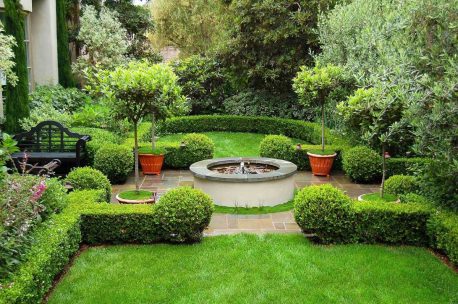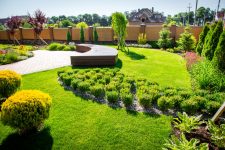Boxwood is an evergreen plant growing in the form of a bush or tree. Cute bushes with small foliage have long been used to decorate both landscape gardening areas and homes. Today, boxwood, due to the good tolerance of pruning, is often used not only in single plantings, but also for zoning the garden during group plantings as borders.
Material Content:
Boxwood: varieties and types
In nature, the genus has about 100 species, the habitats of which are African, Central American and Euro-Asian regions. Only some varieties are cultivated in the gardens, on the basis of which very interesting forms and varieties have been developed by breeders.
Evergreen boxwood
In the wild, the species is represented by trees reaching 15 m in height, sometimes shrubs, with straight shoots, densely covered with glossy leaves of dark green color. Opposite leaves with barely visible petioles do not exceed 3 cm in length. When flowering, greenish capitate inflorescences consisting of unisexual flowers are noted. Seeds ripen in fruit boxes with leaflets.

Popular varieties:
- Sufroticosis is a very slowly growing shrub up to 1 m in height with opposite egg-shaped leaves and small flowers. Suitable for creating borders and green fences.
- Blauer Heinz is a new frost-resistant variety used for carpet ornaments not higher than 20 cm, with fairly stiff shoots covered with leathery leafy plates of green-blue color.
- Elegance is a variegated representative of the species, represented by spherical bushes of a meter height.
Small-leaved boxwood
Compared with the previous species, it reacts less acutely to frost. Without shelter, a Korean descendant can withstand lowering the mercury column of the thermometer to -30 ° C, but needs to be protected from burning spring rays.
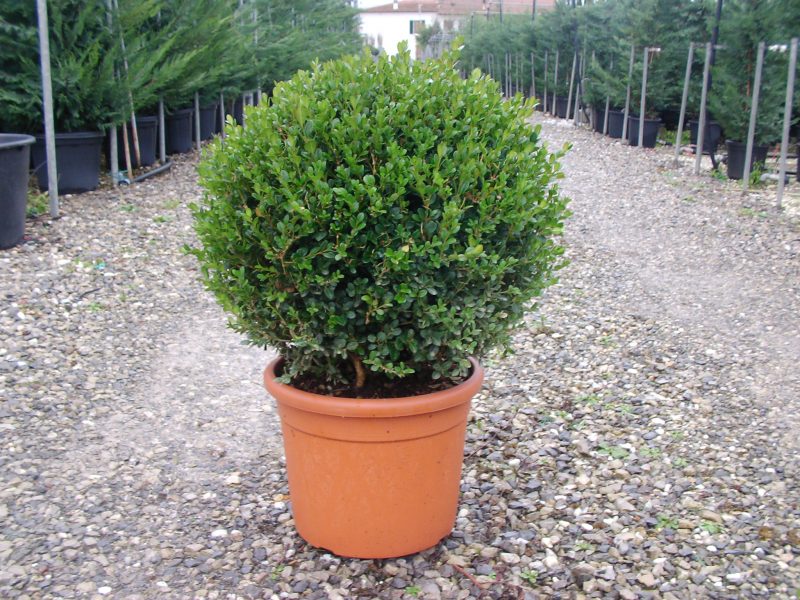
The best varieties:
- Winter Jam is a fast-growing variety up to one and a half meters high with excellent frost resistance. The dense crown tolerates pruning perfectly.
- Faulkner is a slowly growing representative of the species with a compact crown, from which a ball is usually formed.
Caucasian boxwood
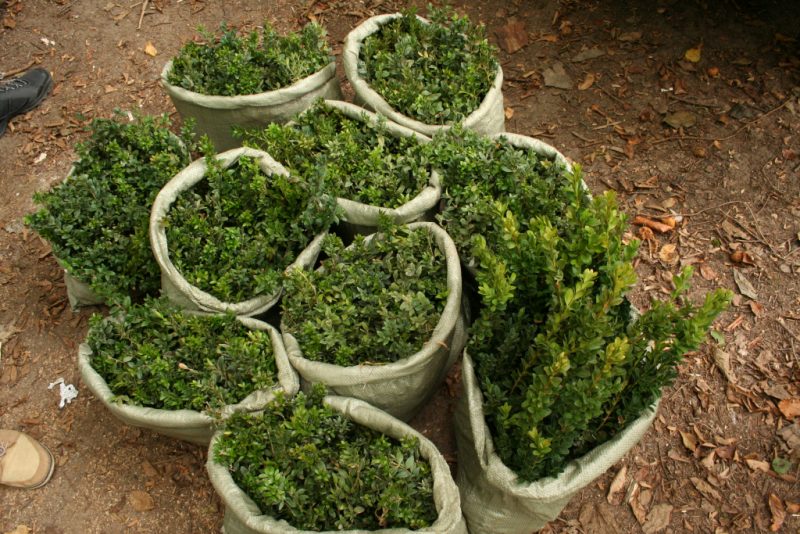
Slowly growing species, characterized by the best winter hardiness and the smallest leaves, in comparison with other European varieties. The maximum life expectancy is 600 years.
Balearic boxwood
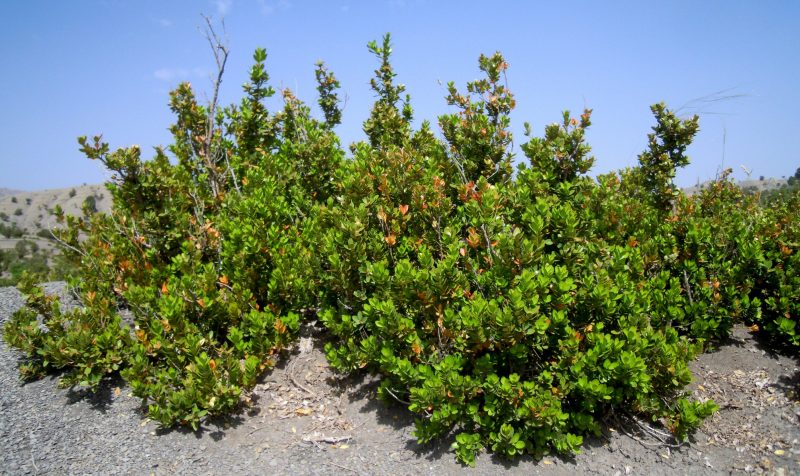
Fast-growing, large-leaved species, distinguished by high decorativeness. However, due to non-zoning in harsh winters, it is cultivated only in the southern regions with a mild climate.
Growing Features
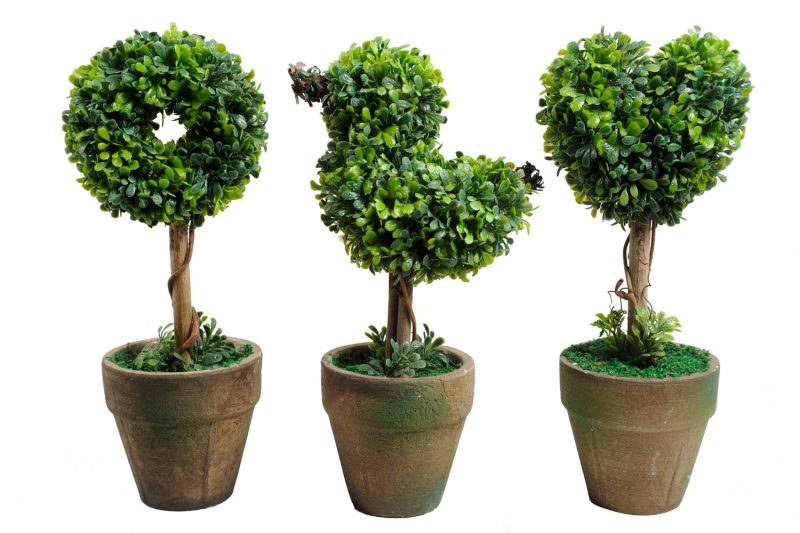
When growing boxwood, the following plant characteristics should be considered:
- Crown. Formed from densely leafy shoots that easily tolerate a molding haircut.
- Boxwood flowers. They exude a pleasant aroma, attracting various insects, including bees. But boxwood cannot be used as a honey plant because of the toxicity of all its parts.
- Species and varietal qualities - shade tolerance and winter hardiness.
Outdoor landing
Proper planting is the key to successful rooting of the plant.
When to plant
The first half of autumn, when at least a month is left before frosts, is considered to be the optimal time for boxwood landing.
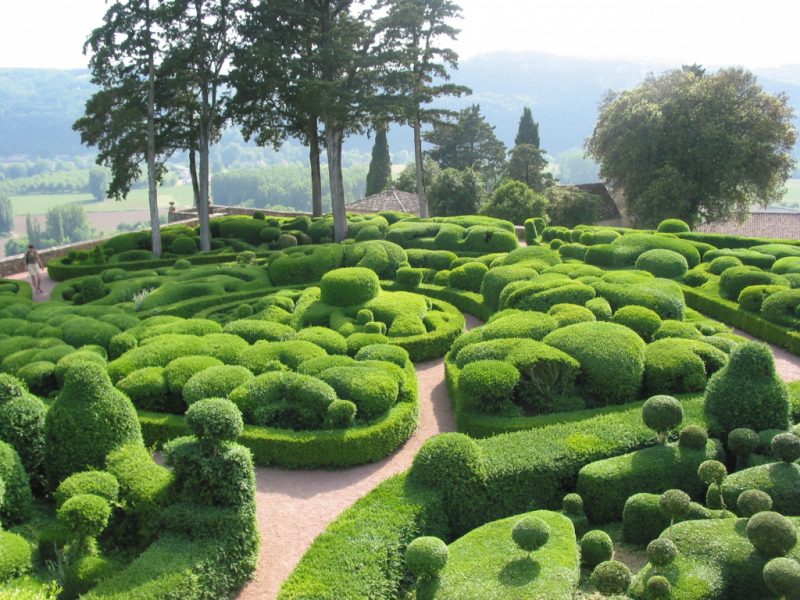
This period is required for the complete rooting of the plant. However, if the gardener really wants to green his plot with decorative shrubs, and the autumn has already passed, then planting work can be done in the spring.
Site and soil preparation
For boxwood, shaded areas of the garden are selected with a light, loose soil of a slightly alkaline reaction, freely passing water. The shrub is undemanding to the composition of soils, but it feels better in areas with a good fertile layer.
Landing rules
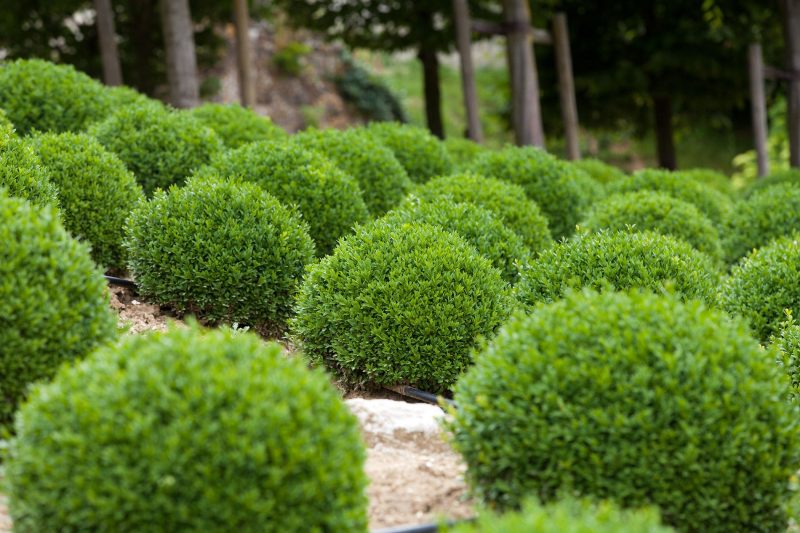
Planting seedlings is carried out according to the following scheme:
- The soil in the container is watered abundantly for easier extraction of an earthen coma.
- After a day, landing pits with sizes three times the size of an earthen coma are dug up at a selected site.
- A layer of perlite is placed in the pit as drainage.
- The extracted soil is mixed with sand in equal parts.
- A sapling is lowered onto the drainage with the spreading rhizome and carefully covered with a soil mixture.
- Soil in the near-stem circle is compacted and watered.
- After the subsidence of the soil, the soil mixture is replenished.
- An embankment is made around the perimeter of the trunk circle for accurate irrigation in the future.
- The inner part of the circle is covered with a layer of sand or perlite in 2 cm.
Open box care
In order for a decorative plant to decorate a personal plot for many years, it is necessary to carry out certain care measures.
How to water?
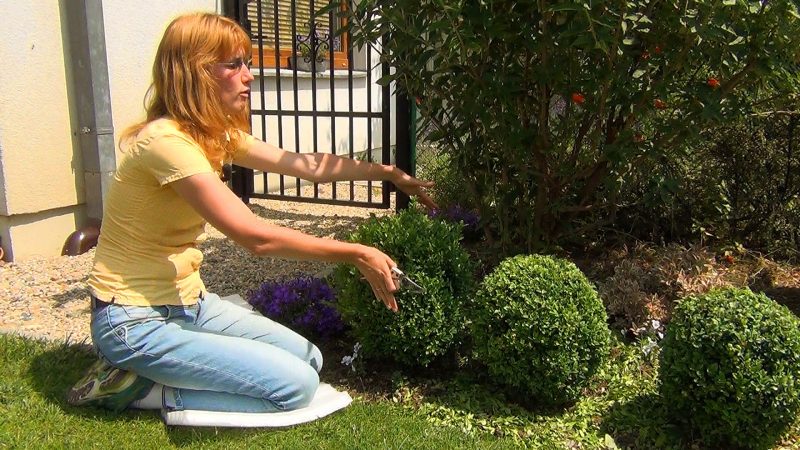
The first watering after planting is carried out in a week. In the future, boxwood is watered in the morning or evening at the rate of 10 liters of water per instance 1 m high. Water flows directly into the near-stem circle, which is outlined by an earthen rampart. In the dry period, the volume of water increases, but the frequency of humidification does not change.
Loosening and mulching
After drying of the soil, the near-stem circle necessarily loosens.When the earth warms up sufficiently by the end of spring, the soil is covered with a 5 cm layer of mulch.
Important! Mulch should not come into contact with the shoots of boxwood.
Fertilizing and fertilizing the soil
Boxwood prefers fertile soil, which should be systematically enriched:
- In spring and summer, plants are fertilized with complex mineral fertilizers.
- In autumn, to fully prepare the shrub for winter, boxwood is fed only with phosphorus-potash fertilizers.
Cropping and shaping the crown
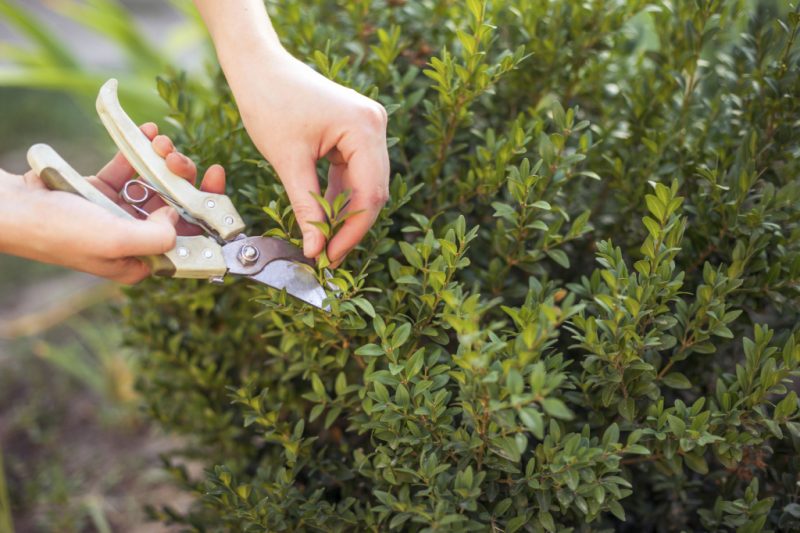
Formative pruning, which boxwood transfers absolutely painlessly, is carried out in the second half of spring. As a result of the procedure, most often a cone, ball or cube is obtained. You can also form a ball on the stem. To do this, just leave the strongest escape, removing the rest. Since most species and varieties are characterized by slow growth rates, in the future it will be necessary only to slightly adjust the formed crown.
Attention! The density of the boxwood crown directly depends on the frequency of haircuts: the more often the pruning is carried out, the thicker the bush.
Shrub transplant
If the plant needs to be transferred to another site, then it is better to do this in the spring with an earthen lump, so as not to disturb the root system unnecessarily. Boxwood transplantation is carried out according to the same scheme as the initial landing.
Pest and Disease Control
On a culture, food of boxwood gall midge caterpillars, individuals of felt and spider mites is often noted, which should be combated with double treatment with a systemic insecticide with an interval of 10-14 days.

Among the diseases, shoot necrosis is distinguished, in which fungicide treatment is possible, as well as cancer. In the case of the development of the latter disease, the affected shoots are cut off with the capture of a healthy part of the branch, and the cut sites are treated with a fungicidal solution.
Boxwood shelter for the winter
Winter is the most difficult period for an evergreen, in which the root system is not able to provide the bush with the necessary nutrition and moisture during the bright sun awakening the buds. Before the onset of cold weather, boxwood is watered abundantly, and the trunk circle is mulched by peat, which will allow to accumulate a certain supply of moisture.

When the thermometer drops below -10 ° C, the boxwood covers itself:
- Punch molds are tied to a support and completely wrapped in non-woven material.
- Hedgerows and solitary landings are tied so as not to break under the weight of the snow, and are protected by covering material in three layers.
Boxwood: reproduction
As a rule, boxwood propagates by vegetative methods, however, if desired, the gardener can try to grow a bush from the seed.
Seed method

Schematically, this lengthy and time-consuming process looks like this:
- Seeds germinate for a month in wet tissue.
- Hatching seed is sown in a substrate of peat and sand.
- Crops are kept under glass until seedlings appear.
- Strong seedlings are planted in open ground after the onset of stable heat.
Boxwood - propagation by cuttings
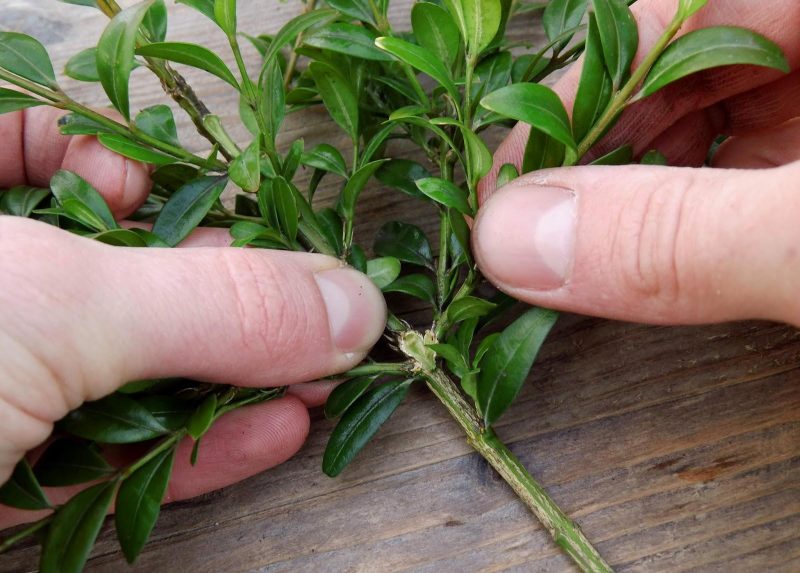
Cuttings are carried out in the spring as follows:
- From young shoots cuttings are cut 15 cm long.
- Treated with growth stimulants, planting stock is planted in open ground fertilized with compost.
- Landings are covered with glass jars, which are removed for ventilation and moisturizing.
- After a month, roots appear on the cuttings.
How to propagate layering?
In spring, reproduction by layering is carried out, in which young shoots are bent and dug up with soil, and after rooting, they are separated from the mother's specimen and planted in permanent places.
Landscape design
Boxwood is quite widely used for landscaping:
- Due to the good tolerance of the haircut, spectacular geometric shapes are formed from the bush.
- From undersized varieties, borders are created that delimit the garden areas or indicate garden paths.
- Tall varieties look great as hedges.
- The perfect combination with flower cultures allows you to create decorative scenes with the help of boxwood.
So, if you follow the simple rules, you can grow an unpretentious, but at the same time effective boxwood box everyone.


